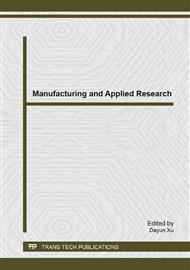p.379
p.386
p.391
p.397
p.405
p.410
p.418
p.423
p.428
Study on Accuracy Affected by the Proficiency of Body Measurement and the Characters of Points Related
Abstract:
Body measurement plays an important role in clothing manufacturing, especially in advanced clothing customization.[ The purpose of this paper is not only to offer some approaches to testing the size collected, but also to make sure that the accuracy of measurements are satisfied with clothing made. In this paper, ANOVA and orthogonal experimental are seen as mathematical model to analyze the accuracy of data measured by clothing made. Three factors selected to explore this question are surveyor (factor A), proficiency of work (factor B) and characters of points related to body measurement (factor C).This model can be used to evaluate the different effects on every factor alone, and to find some factors on which have a significant influence. According to the result, both factor B and factor C have significant influence on the accuracy. The creativity in this paper is making use of orthogonal experiment and ANOVA to find and test the factors related to the accuracy.
Info:
Periodical:
Pages:
405-409
Citation:
Online since:
March 2014
Authors:
Price:
Сopyright:
© 2014 Trans Tech Publications Ltd. All Rights Reserved
Share:
Citation:


